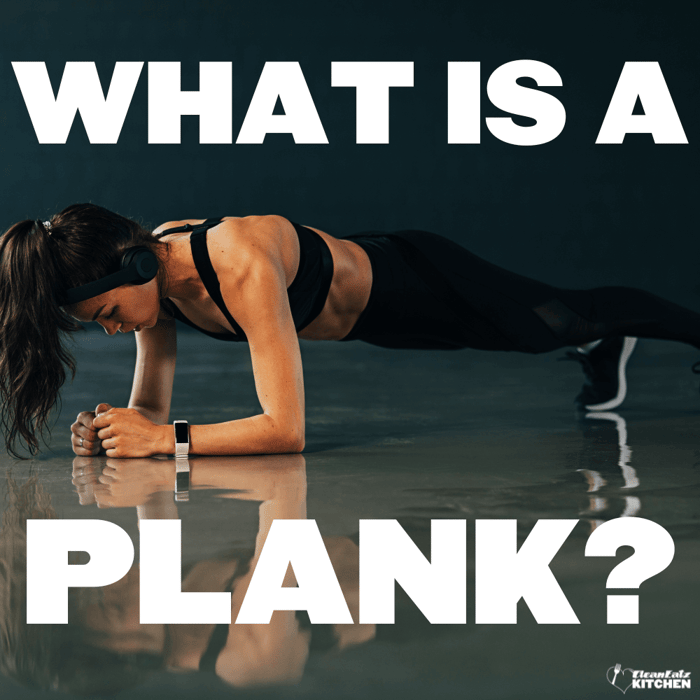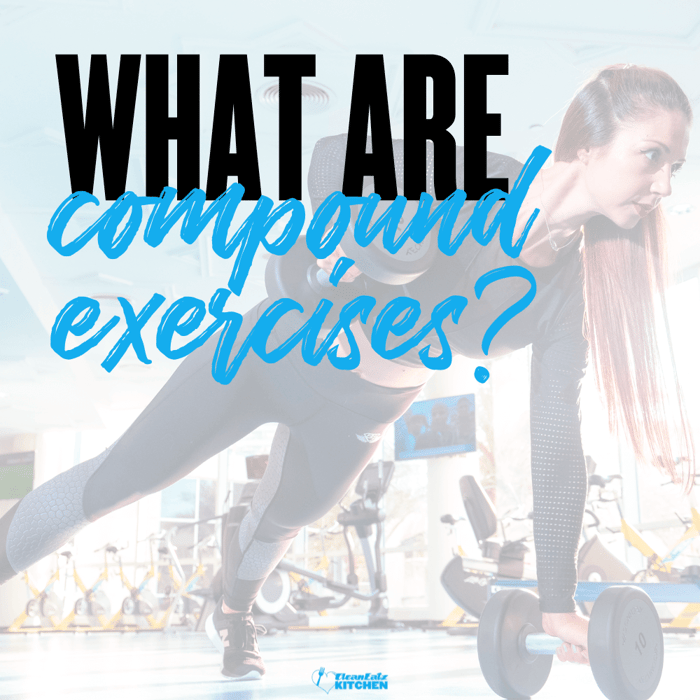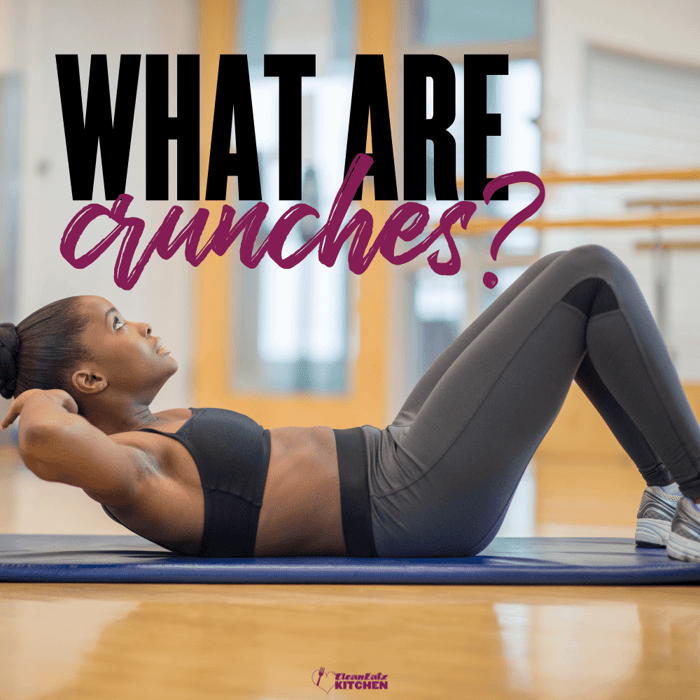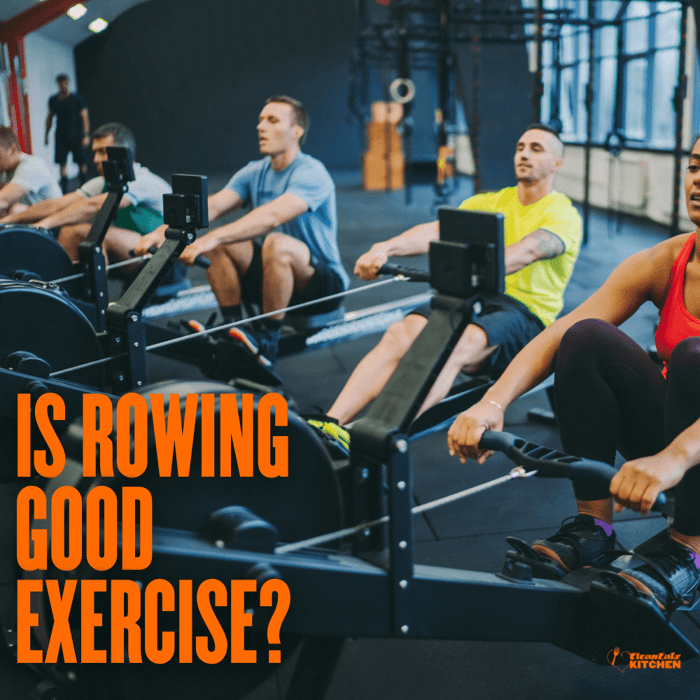Last updated: September 22, 2025
What Is a Plank Exercise? Muscles Worked, Proper Form, Variations & Programs
Short answer: A plank is an anti-movement core exercise—you brace your trunk to resist extension, rotation, and side-bending. Done well, it trains your abs (rectus abdominis), obliques, deep core (transverse abdominis), and glutes while keeping a neutral spine. Quality beats marathon holds: aim for strong, crisp sets and progress to harder variations.
Why Do Planks? Benefits at a Glance
- Spine-friendly core training: Builds bracing strength without repeated spinal flexion.
- Strong carryover: Helps squats, deadlifts, pressing, treadmill work, and sports by resisting unwanted motion.
- Minimal equipment: Floor space only; scales up or down easily.
- Time-efficient: Short, high-tension sets beat long, sloppy holds.
Muscles Worked
| Primary | Secondary |
|---|---|
| Rectus abdominis, transverse abdominis, internal/external obliques | Glutes, spinal erectors (isometric), serratus anterior, lats, shoulders |
Perfect Plank Form (Step-by-Step)
- Setup: Forearms on floor, elbows under shoulders; legs straight, feet hip-width.
- Align: Head → heels in a straight line. Gaze down, chin slightly tucked.
- Brace: Exhale gently, then “zip up” ribs to pelvis. Squeeze glutes and lightly draw belly button in and up without rounding your back.
- Press & pack: Push forearms down, spread shoulder blades (serratus), keep shoulders away from ears.
- Breathe: Short, controlled breaths while maintaining tension—no breath-holding.
- Finish before form fades: End the set when hips start sagging or piking.
Common Mistakes & Easy Fixes
| Mistake | What you see | Fix |
|---|---|---|
| Sagging hips | Low back arching, pressure in lumbar | Squeeze glutes, pull ribs down, shorten the set, regress variation |
| Piked hips | Butt high, weight off core | Lower to straight line; think “long body,” push heels back |
| Shoulders shrugged | Neck tight, traps jammed up | Press forearms down and “spread the floor” (serratus), keep neck long |
| Looking forward | Neck cranked | Eyes down, slight chin tuck |
| Marathon holds with bad form | Shaking, breath holding | Use crisp 15–45s sets or harder progressions instead |
Plank Variations (Beginner → Advanced)
- Beginner: Incline forearm plank (hands/forearms on bench), short sets 10–20s; Bear plank (knees under hips, hover 1–2 in off floor).
- Base: Forearm plank; High plank (top of a push-up).
- Anti-rotation/side bend: Side plank (knees → feet), Side plank with top-leg lift, Stir-the-pot (on stability ball), Plank shoulder taps.
- Higher tension: RKC plank (actively pull elbows toward toes and toes toward elbows), Feet-elevated plank, Body-saw (feet on sliders), Plank reach/row (light DBs).
- Core progression family (great pairings): Dead bug, Hollow hold, Bird dog (anti-rotation focus).
Want flexion work too? See Crunches: What They Are & How to Do Them—use sparingly and pain-free.
How to Program Planks (Sets, Time, Frequency)
- Frequency: 2–4 days/week within full-body or core blocks (see our 5-Day Workout Routine).
- Set length: 15–45 seconds for standard planks; 8–20 seconds for high-tension RKC sets. Stop before form breaks.
- Sets: 2–4 per variation, 30–60 seconds rest.
- Progression: First hit quality 30–40s holds, then progress variation (e.g., to side plank or body-saw) rather than chasing multi-minute holds.
- Pairing: Superset with upper/lower moves (e.g., rows or lunges) to save time.
Fast Core Finishers (6–10 Minutes)
6-Minute Anti-Movement Circuit
- 30s RKC plank → 30s rest
- 30s Side plank (L) → 15s rest
- 30s Side plank (R) → 15s rest
- 30s Bear plank hold → 30s rest
- Repeat once
10-Minute Slider Series
- Body-saw 6–8 reps → 30s rest
- Plank knee tucks 8–10 → 30s rest
- High-plank shoulder taps 12/side → 30s rest
- 3 rounds
Safety & Modifications
- Wrists/shoulders sensitive? Use forearms, make a fist grip, or elevate hands on a bench.
- Pregnant/postpartum: Modify intensity and avoid breath-holding/over-bracing; consult your clinician or pelvic-health PT.
- Low back discomfort? Reduce hold time, squeeze glutes more, elevate on a bench, or regress to bear plank/bird dog. Stop if pain persists.
- “Abs vs belly fat” reminder: Planks strengthen your core; they don’t spot-reduce fat. For a smaller waist, pair training with a modest calorie deficit—see Calorie Calculator and How Long Does It Take to Get Abs?
Related CEK Guides, Tools & Meals
- Training: 5-Day Workout Routine • Treadmill Workouts • Elliptical Guide
- Nutrition: Protein Calculator • Meal Plan Generator • High-Protein Snacks
- Meals: High-Protein Box • Build-a-Meal Plan • Weight-Loss Meal Plan
FAQs
How long should I hold a plank?
30–45 seconds with perfect form is plenty for most. Progress by increasing tension or choosing harder variations, not by chasing 5-minute holds.
Are forearm planks better than high planks?
Both work. Forearm planks reduce wrist load and emphasize anti-extension; high planks add shoulder stability. Rotate both.
Do planks burn belly fat?
No single exercise spot-reduces fat. Planks strengthen the core. Fat loss comes from a calorie deficit and consistent training—use our Calorie Calculator.
How often should I do planks?
2–4 times per week is plenty—drop them into warm-ups or finishers, or superset with strength lifts.
What’s a good progression?
Incline plank → forearm plank → side plank → body-saw or RKC plank → feet-elevated/stir-the-pot/rows.
Disclaimer: General fitness information, not medical advice. If you have pain or medical conditions, consult a qualified professional.




